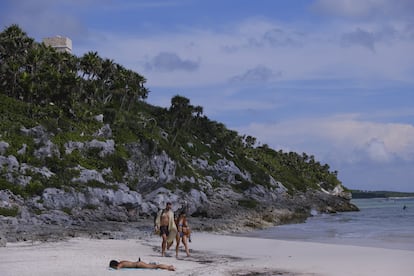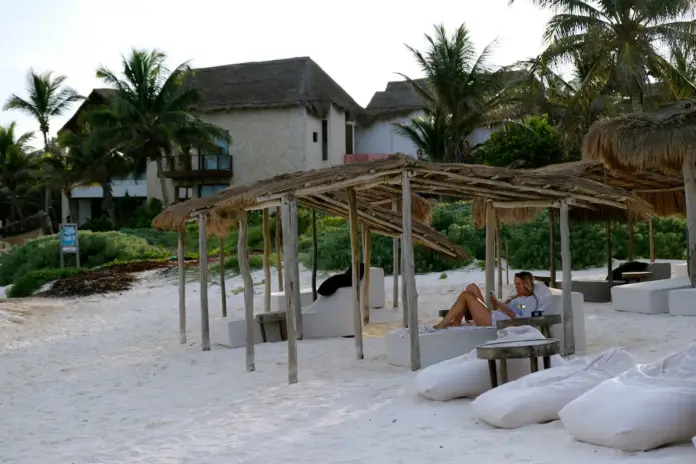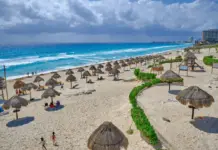There’s still some sargassum on the white sand of Tulum’s beaches, and a dozen tourists stroll along the seashore, dodging the seaweed. The restaurants and hotels along the Riviera Maya’s Golden Mile have a few visitors, but nothing is overflowing. It’s low season. That’s the mantra repeated by hoteliers, merchants, and even the mayor. The situation would be the usual at this time of year—the end of hurricane and sargassum season—except that official tourism figures showed that hotel occupancy fell more than 10% in September. This figure has set off alarm bells in all sectors of a destination, in the state of Quintana Roo, that had been steadily growing and seemed to be on the verge of success if it were going to die.
Tulum has encountered a perfect storm: a historic influx of sargassum, global economic uncertainty, rising prices, and a shift in tourism dynamics in the region due to the recent construction of two emblematic projects by the Mexican government: the Tulum Airport and Jaguar Park. In recent years, the area has established itself as a premium option for tourists, with experiences such as electronic music festivals, spiritual retreats, Mayan weddings, and spa treatments. The destination has already acquired 11,800 hotel rooms, but occupancy barely reached 50% in the last month. “There is no destination in the world that continues to grow historically forever,” says Toni Chaves, president of the Riviera Maya Hotel Association.
Chaves acknowledges that a number of factors have coincided in 2025 to see a slight decline in tourism, but assures that this will not be a lasting trend. However, he notes that the growth of room rentals through platforms like Airbnb is creating a problem of unfair competition in his sector, given that they don’t comply with the same regulations and obligations as hotels. “For me, vacation rentals are a market trend, and market trends can’t be stopped, but they must be regulated,” the hotelier argues.

Source: elpais




